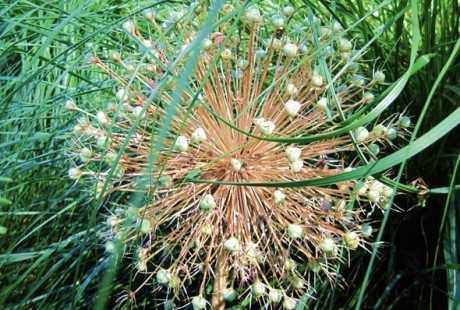geotropism
Geotropism is an incredibly sophisticated method through which a plant manages to use the same process to make its stems grow up and its roots reach down.
If a plant is growing horizontally, instead of vertically, a plant hormone called auxin, which serves to inhibit cellular growth, sinks to the underside of the roots and stems in response to the gravity pull.
This is where the magic happens. In the aerial parts the auxin inhibits the growth on the bottom side of the stem, encouraging their top sides to curl upward. This is called negative geotropism. But in the underground parts the auxin inhibits the growth on the bottom side of the roots, encouraging their top sides to turn downward. This is called positive geotropism.
How does the plant decide when to do which? I would love to find that out myself.
But wait, there is more. This magical action happens only in plants that grow at angles up to fifty degrees as measured from the horizontal axis. As the slant approaches fifty degrees, the plant reaches a tipping point, where it switches back to an even distribution of auxin throughout its stems, so it can engage in phototropism again. This even distribution of auxin happens in the stems, but not in the roots, which keep growing straight down, something the plant can apparently do at will; so much for the gravity pull.
Here is a lovely example of geotropism in action, sweet alyssum sticking out the side holes of a strawberry pot.
I can’t help my curiosity: how does one grow upside-down tomatoes?




 Previous Post
Previous Post Next Post
Next Post




